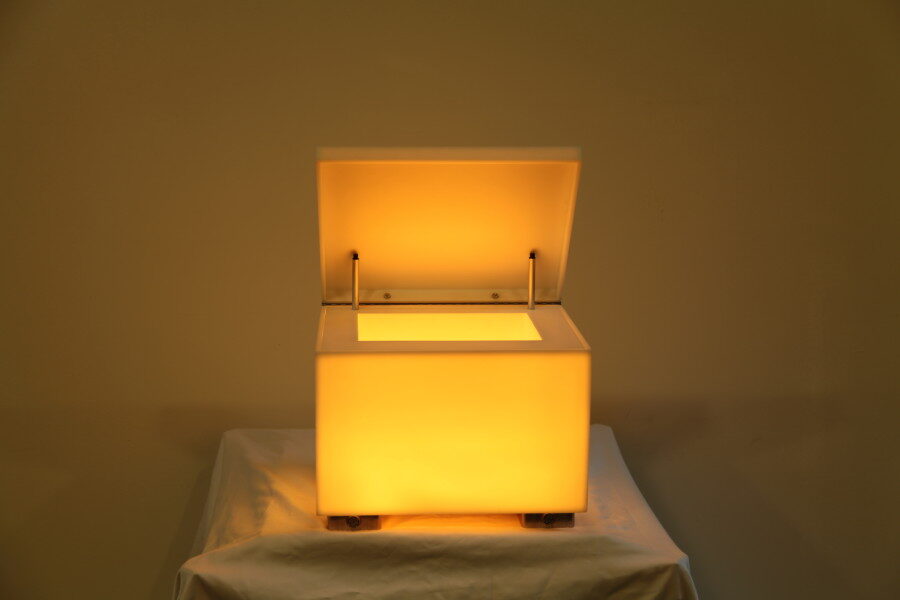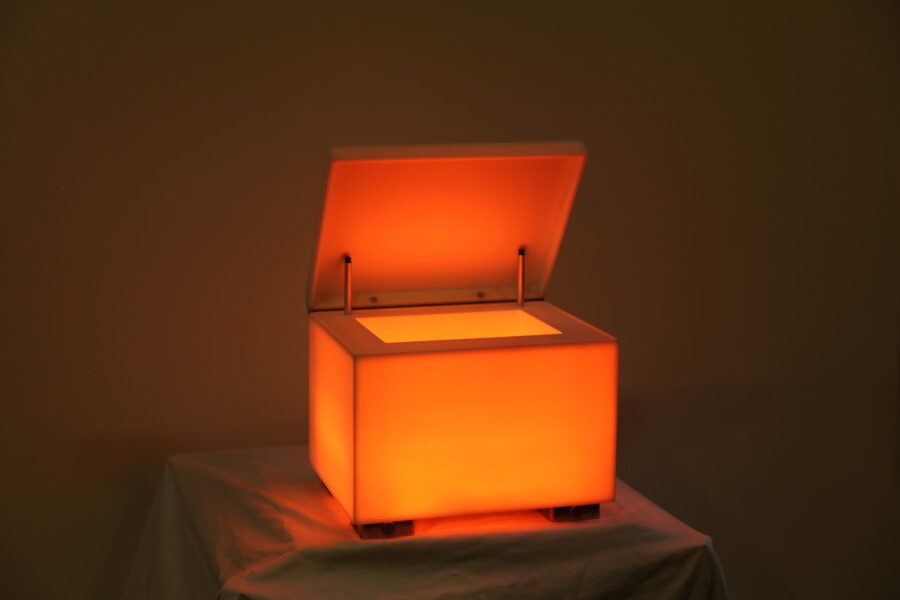About five reactive objects will be created for the EMOTION installation. All the selected objects will detect presence through cameras and/or sensors that will trigger their activation.
List of 5 objects:
– Shy Light: a floor lamp that bends while its bulb dims, as if feeling shy and embarrassed when a person approaches.
– Dancing Chair: Chair that dances, happy, happy!
– Punching Drawers: Bureau or dresser drawers that open and close, aggressively.
– Vanishing Portrait: A painting that melts, in despair, as if crying, tired, and comes back up together again.
– Green Salutations: a tall plant, with a flexible stem and large green leaves that undulate and wave as to welcoming the passer by.
(Production on hold until funded)
Responsive Objects’ descriptions:
Object 1: Shy Light
Shy Light is a floor lamp that behaves in a shy manner when it detects a person approaching. Its head turns away in the opposite direction while its bulb dims or blushes. The closer the person, the more the lamp bends and blushes.
Shy Light is modeled on a standard metallic floor lamp, about human size. Hidden sensors detect presence and trigger reactivity. It features a flexible metal gooseneck and motors that activate torsions in x / y / z directions. The distance of the presence is measured, which determines the graduation of the neck’s torsion and the intensity of the light. The less depth detected, the more torsion and the less light.
All components will be integrated within the design of the lamp and look similar to a stylish, sleek metal floor lamp.
Object 2: Dancing Chair
Dancing Chair expresses happiness when it detects a passer-by. The chair starts lifting one leg, stretching it outwards, then another, and then all four legs move in a choreographed manner. The closer the passer-by, the more ecstatic the dance.
Dancing Chair has a polypropylene shell that hides the electronic components as well as the motors under the seat, and an aluminum structure and anodized aluminum legs to accommodate the ease for motion.
I would be interested in using the “Lord Yo” (1994), or the “Cosy chair” by Philippe Starck. Their designs are nicely appropriate.
Object 3: Punching Drawers:
Punching Drawers are about aggressively. A bureau or a dresser –depending on the environment (public/intimate)- will have their drawers open and close aggressively. As soon as presence is detected, a drawer pushes open with a loud clash, then loudly closes back. Immediately afterwards a second drawer acts similarly, then, if presence is still there and even more if it approaches, multiple drawers open and clash with slamming noise. As if a boxer’s or fighter’s fist was reaching out to hit the passer-by.
Object 4: Vanishing Portrait:
Vanishing Portrait is a painting hanging on the wall. The painting could be of the iconic Mona Lisa by Leonardo da Vinci. It’s a faked painting whose frame conceals a digital screen and electronic components behind it.
When the painting detects a person approaching, it starts melting down as in despair, as if crying for help, as if tired.
The paint just melts, starting from the top and going down the portrait, cumulating the material, mixing it up. If the passer-by stays around, it will melt down to the bottom and mash all the paint there.
When the presence leaves the detection area, the painting comes back up together again, ready for the next passer-by.
Object 5: Green Salutations:
Green Salutations comes in the form of a potted tall plant with several flexible stems and large green leaves that undulate and wave to celebrate the presence of a passer by. It expresses welcoming, recognition, joy.
The plant welcomes presence by bending and bowing. It applauds the presence if the person stays in its vicinity by clapping its leaves to one another. When the passer-by retreats, the plant straightens up and rigidifies again.
Technical: sensors, cameras, robotics, microcontrollers, computers, light and sound. Perhaps liquids, fragrance, wind…
EMOTION can also take place in a museum or gallery space by re-creating the layout of a furnished loft or apartment (or any dwelling or work space), where 5 or 6 objects in the space are activated. It can be a “touring” installation, taking shape in various locations. It will create a growing “family” of reactive objects, which ultimately can be sold as prototypes or small editions.

